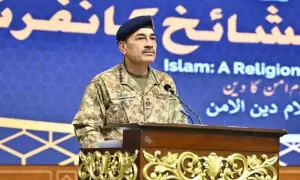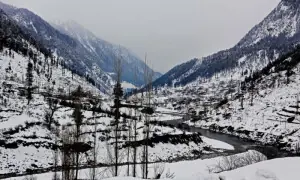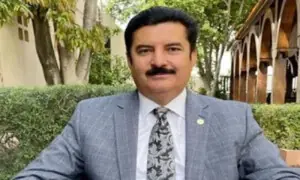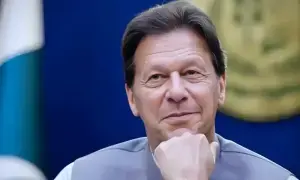Indian election: Markets unnerved as opposition puts up stiff fight for Modi
Indian Prime Minister Narendra Modi’s alliance raced to a majority in early vote counting trends in the general election on Tuesday, but the numbers were well short of the landslide predicted in exit polls, TV channels showed.
The early see-saw trends unnerved markets with stocks falling steeply. The NIFTY 50 and the S&P BSE Sensex were both down over 2% at 0500 GMT.
The rupee also fell against the dollar and benchmark bond yields were up.
The markets had soared on Monday after exit polls on June 1 projected Modi and his Bharatiya Janata Party (BJP) would register a big victory, with its National Democratic Alliance (NDA) seen getting a two-thirds majority and more.
At 0430 GMT, TV channels showed the NDA was ahead in nearly 300 of the 543 elective seats in parliament, a simple majority, in early counting. The opposition INDIA alliance led by Rahul Gandhi’s Congress party was leading in over 200 seats, higher than expected.
Only about 10%-15% of the total votes had been counted at the time, TV channels said.
BJP alone accounted for nearly 250 of the seats in which the NDA was leading, compared to the 303 it won in 2019. Trends also showed Modi leading first, then trailing and leading again in his seat in the Hindu holy city of Varanasi.
The first votes counted were postal ballots, which are paper ballots, mostly cast by troops serving outside their home constituencies or officials away from home on election duty. This year, postal votes were also offered to voters over 85 years of age and people with disabilities to allow them to vote from home.
Counting is expected to last several hours as the large majority of votes polled in electronic voting machines or EVMs are taken up after the first 30 minutes of counting postal ballots.
“These are very early trends, we are going to see better results as the day progresses,” Congress spokesperson Pawan Khera said.
Read more:
Modi accused of targeting Muslims in election speech
Sikh separatist contests India election from jail, a worry for government
Released opposition leader urges Indians to battle ‘dictatorship’
TV exit polls broadcast after voting ended on June 1 projected a big win for Modi, but exit polls have often got election outcomes wrong in India. Nearly one billion people were registered to vote, of which 642 million turned out.
Markets cheer
India stocks fell at the open after Monday’s sharp surge as traders said there was some nervousness on the margin of victory.
The NIFTY 50 was down 2.2% at 0345 GMT and the S&P BSE Sensex (.BSESN) was down 1.8%.
TV exit polls released on Saturday after voting ended projected the BJP-led National Democratic Alliance could win a two-thirds majority in the 543-member lower house of parliament.
Several major polls projected the BJP alone could win more than the 303 it won in 2019. The projections pushed Indian shares to lifetime highs on Monday while the rupee gained and bond yields dropped.
Nearly one billion people were eligible to vote in the seven-phase, seven-week poll which began on April 19 and held in searing summer heat with temperatures touching nearly 50° Celsius (122° Fahrenheit) in some parts.
More than 66% of registered voters turned out, just one percentage point lower than the previous election in 2019, squashing pre-poll concerns that voters might shun a contest thought to be a foregone conclusion in Modi’s favour.
Modi, 73, who first swept to power in 2014 by promising growth and change, is seeking to be only the second prime minister after India’s independence leader Jawaharlal Nehru to win three straight terms.
He began his campaign by showcasing his record in office including economic growth, welfare policies, national pride, Hindu nationalism and his own personal commitment to fulfilling promises which he called “Modi’s Guarantee”.
However, he changed tack after low voter turnout in the first phase and accused the opposition, especially the Congress party which leads an alliance of two dozen groups, of favouring India’s 200 million Muslims - a shift analysts said made the campaign coarse and divisive.
They said the pivot may have been aimed at firing up the Hindu nationalist base of Modi’s Bharatiya Janata Party (BJP) to draw them to vote. Modi defended himself against criticism that he was stoking divisions between Hindus and Muslims to win votes and said that he was only faulting the opposition campaign.
The opposition INDIA alliance, led by Rahul Gandhi’s Congress party, denied it favoured Muslims in the Hindu-majority country and said Modi would destroy the constitution if he returned to power and end affirmative action enjoyed by the so-called backward castes. The BJP rejects this.
For the latest news, follow us on Twitter @Aaj_Urdu. We are also on Facebook, Instagram and YouTube.
















Comments are closed on this story.